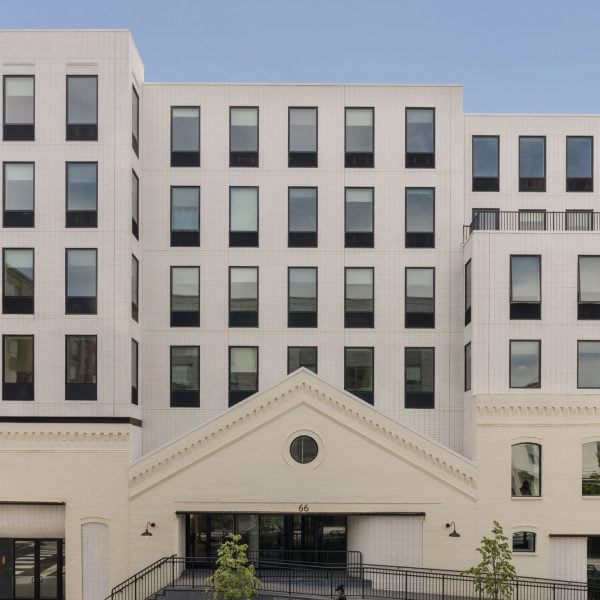[ad_1]
New York-based GRT Architects has completed a mixed-use complex in Jersey City, which involved restoring three brick warehouses and adding four new levels.
The 66 Monitor development – also known as The Starling – includes 39 residential units, a large restaurant, a small cafe and parking within the expanded complex.
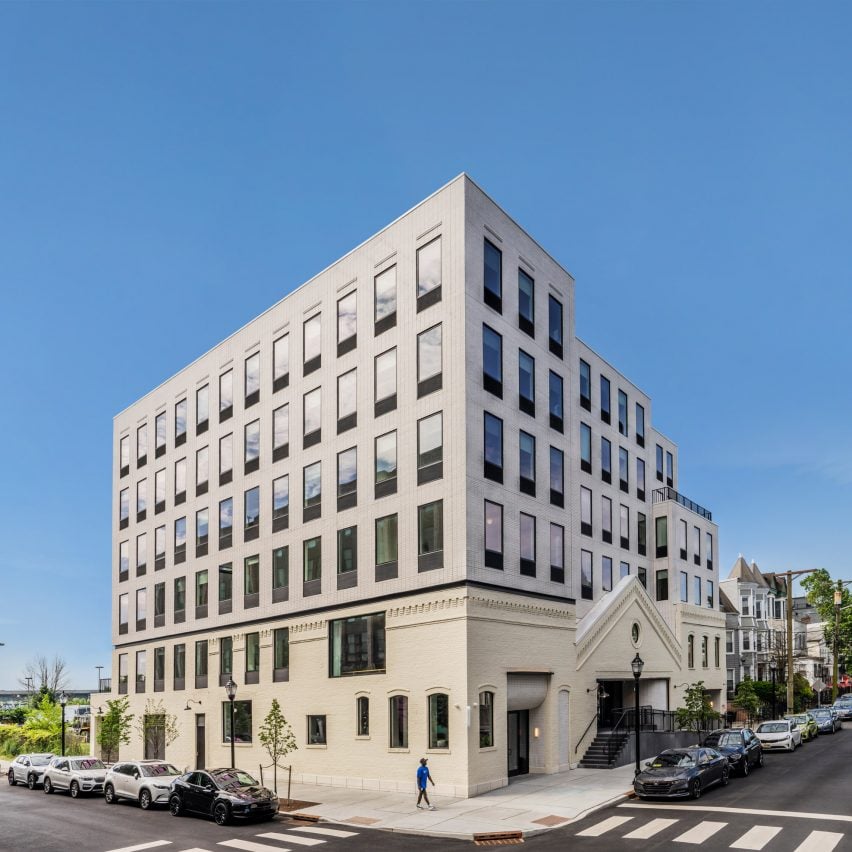
Originally built in the 19th century, the trio of warehouses were constructed independently of each other, and have distinctive rooflines and architectural details such as cornices and window rhythms.
GRT Architects set about preserving and updating these existing structures and designed a unifying addition to sit atop all three.
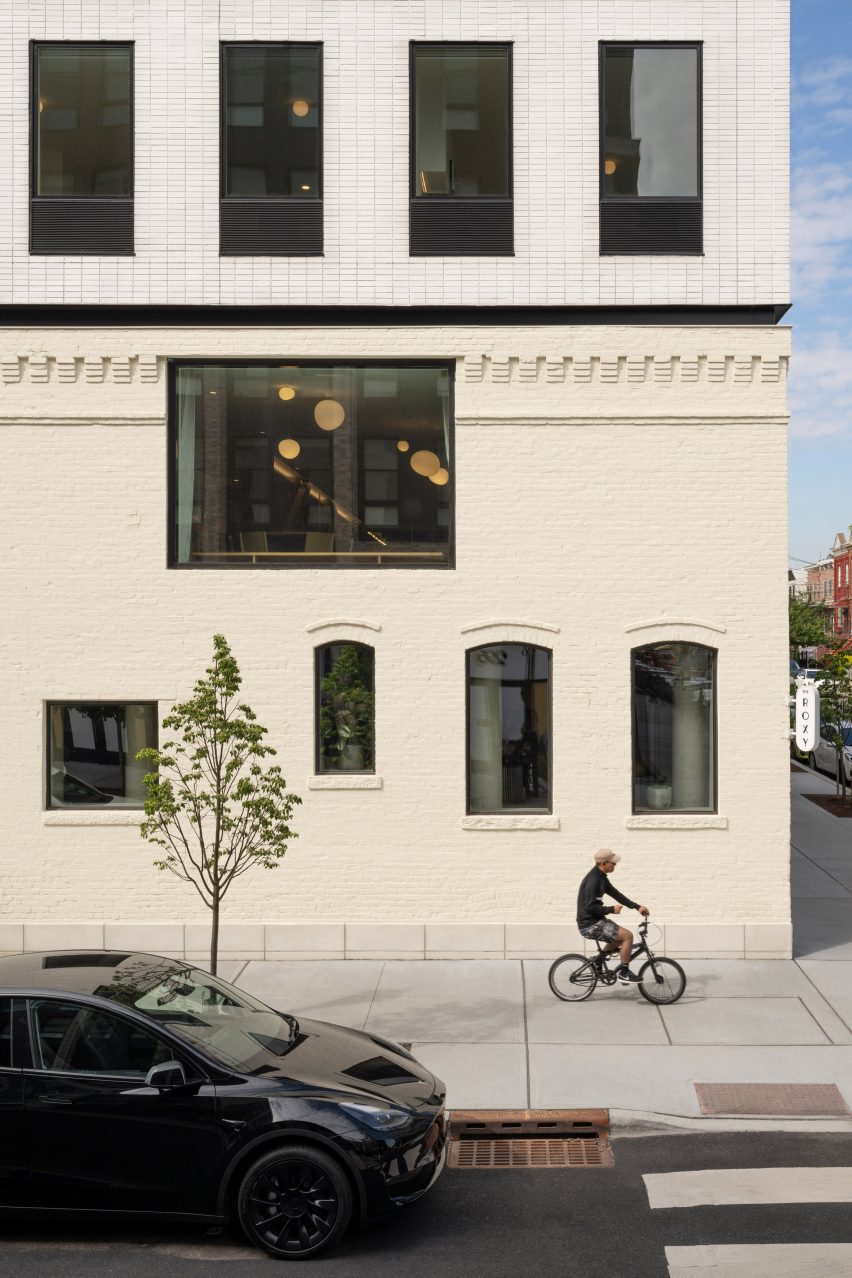
This contemporary form features stacked-bond bricks in bright white and regularly spaced fenestration, contrasting the irregular-spaced windows and the beige hue of the older construction.
The two are also separated by a “shadow reveal” – a dark, inset horizontal band around the perimeter, which visually emphasises the shift from old to new.
“The rationally laid out facade above contrasts with the irregularity of the existing early 20th century buildings,” said GRT Architects.
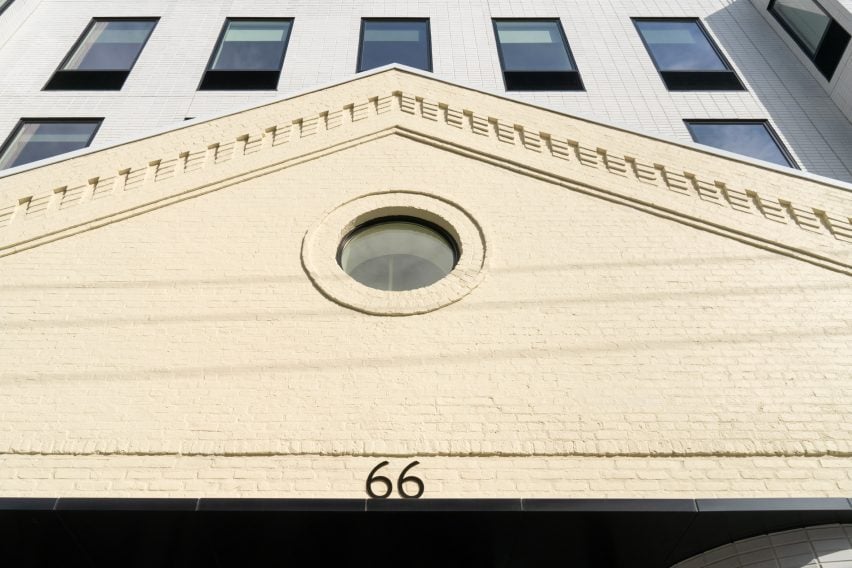
Other architectural moves on the front facade are intended to respond to the existing warehouse buildings.
“We stepped the mass of our four-storey addition back in plan and elevation to acknowledge the tripartite facade along Monitor Street, and reduce bulk adjacent to neighbouring buildings of a smaller scale,” said GRT Architects.
Any new openings in the existing walls were made carefully, while industrial metal shutters were swapped for glazing.
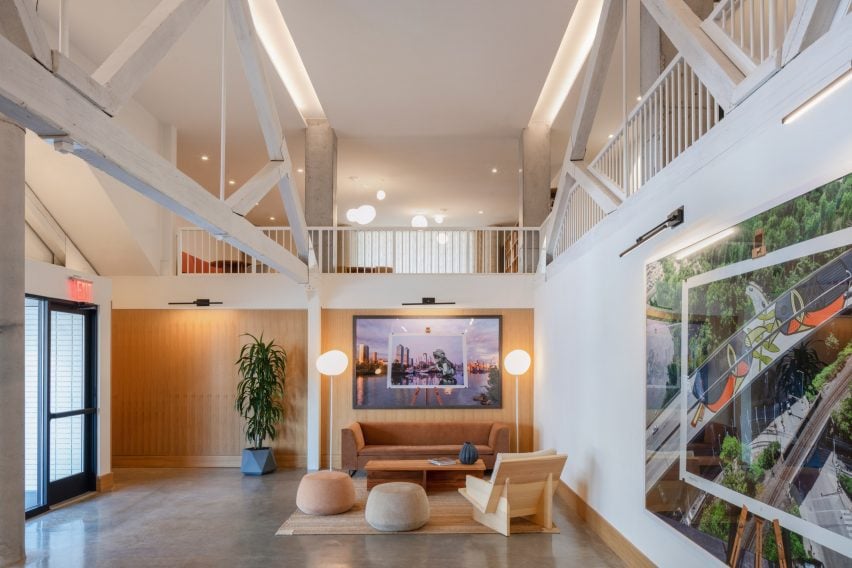
A double-height lobby space occupies the central gabled roof building and features details that draw attention to its construction.
These include exposed reclaimed trusses that were painted white to match the walls and ceiling and are subtly reflected in the polished concrete floors.
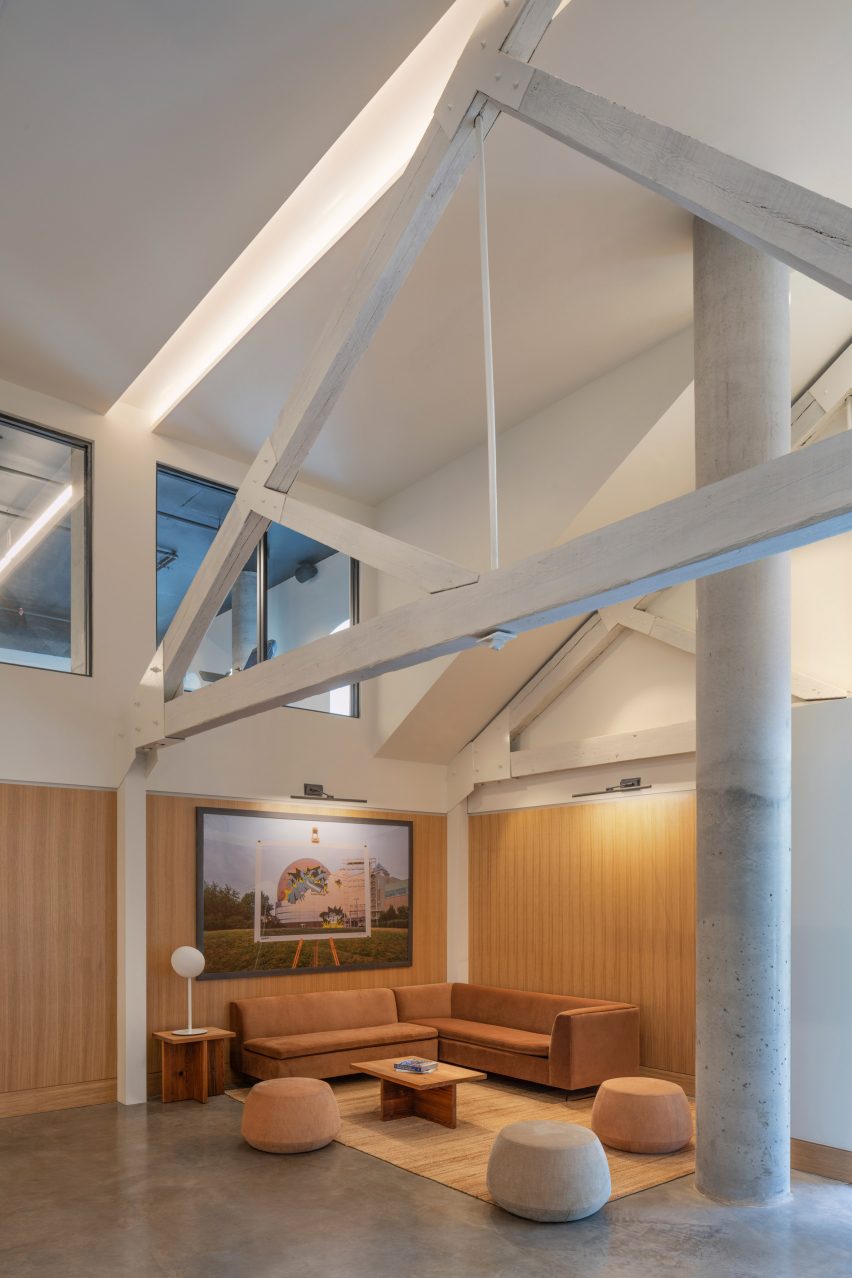
New concrete structural columns were left exposed, while more reclaimed wood was repurposed to create furniture for the first and second-floor communal spaces around the lobby.
“We aimed to reuse and reclaim as much as possible,” the team said.
Residents of the buildings also have access to a rooftop terrace that offers views across from New Jersey to the Manhattan skyline.
Adapting the historic buildings required significant technical work, including stabilising the existing brick walls using steel facade reinforcement.
The foot-thick existing brick walls were also insulated from the interior and waterproofed from the exterior.
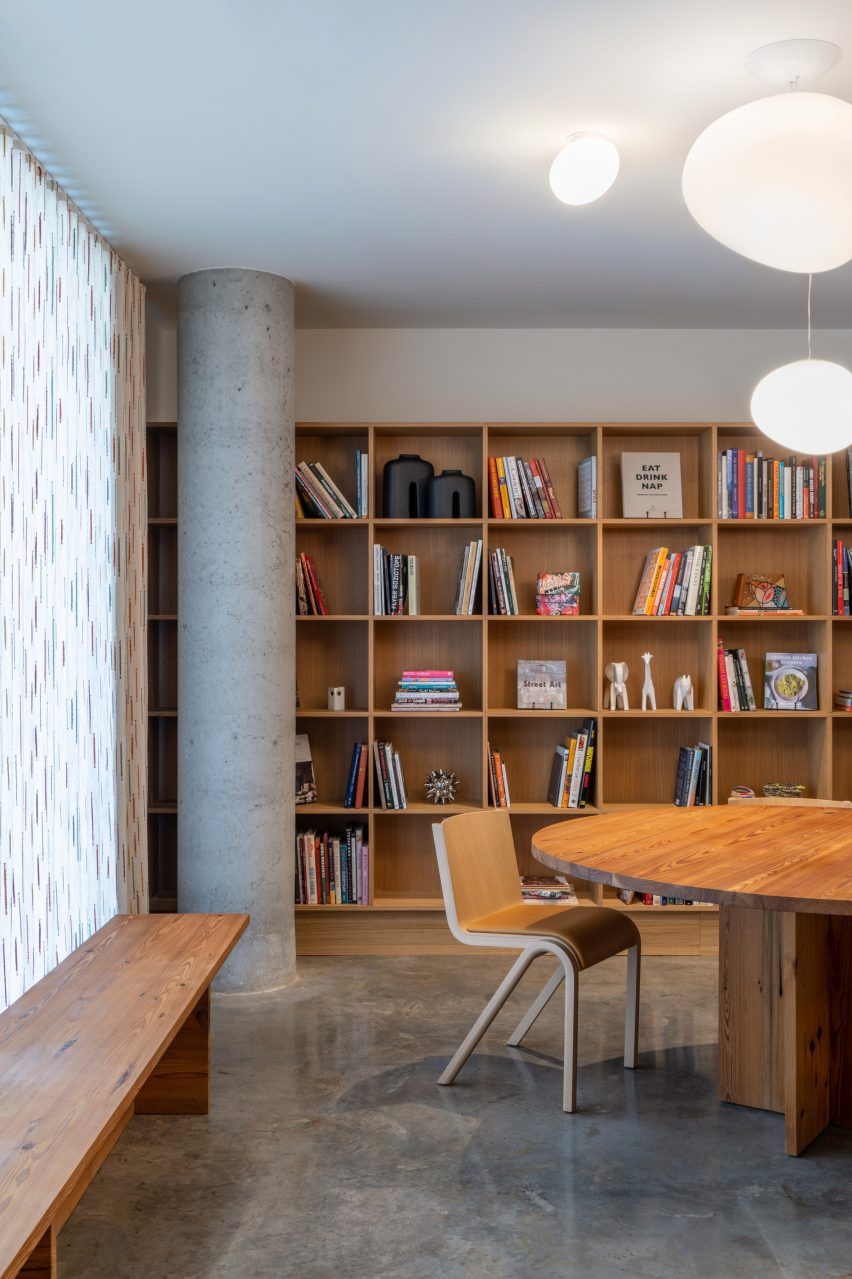
GRT Architects was founded by Rustam-Marc Mehta and Tal Schori in 2014, and the firm has worked on a variety of projects across the Tristate area over the past decade.
In the residential sector, the studio has previously completed a black house with huge triangular windows in New York’s Dutchess County and a cedar bungalow above marshland on the Connecticut shoreline.
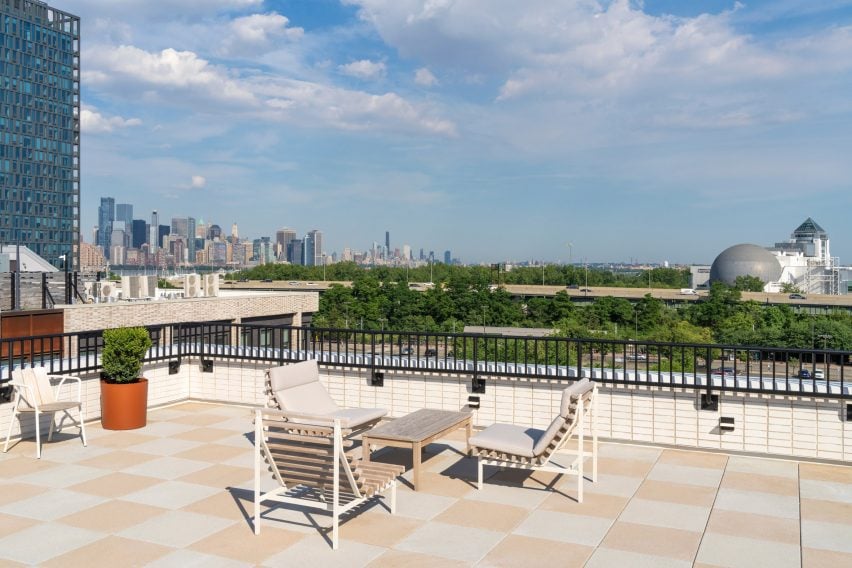
Jersey City is in the midst of a construction boom, as more New Yorkers looking for lower-cost accommodation are choosing to commute across the Hudson River.
Buildings that have sprung up include a trio of towers with rectangular forms and gridded windows by Hollwich Kushner and Handel Architects, and New Jersey’s tallest residential skyscraper by Concrete.
The photography is by Michael Vahrenwald.
[ad_2]
Source link
